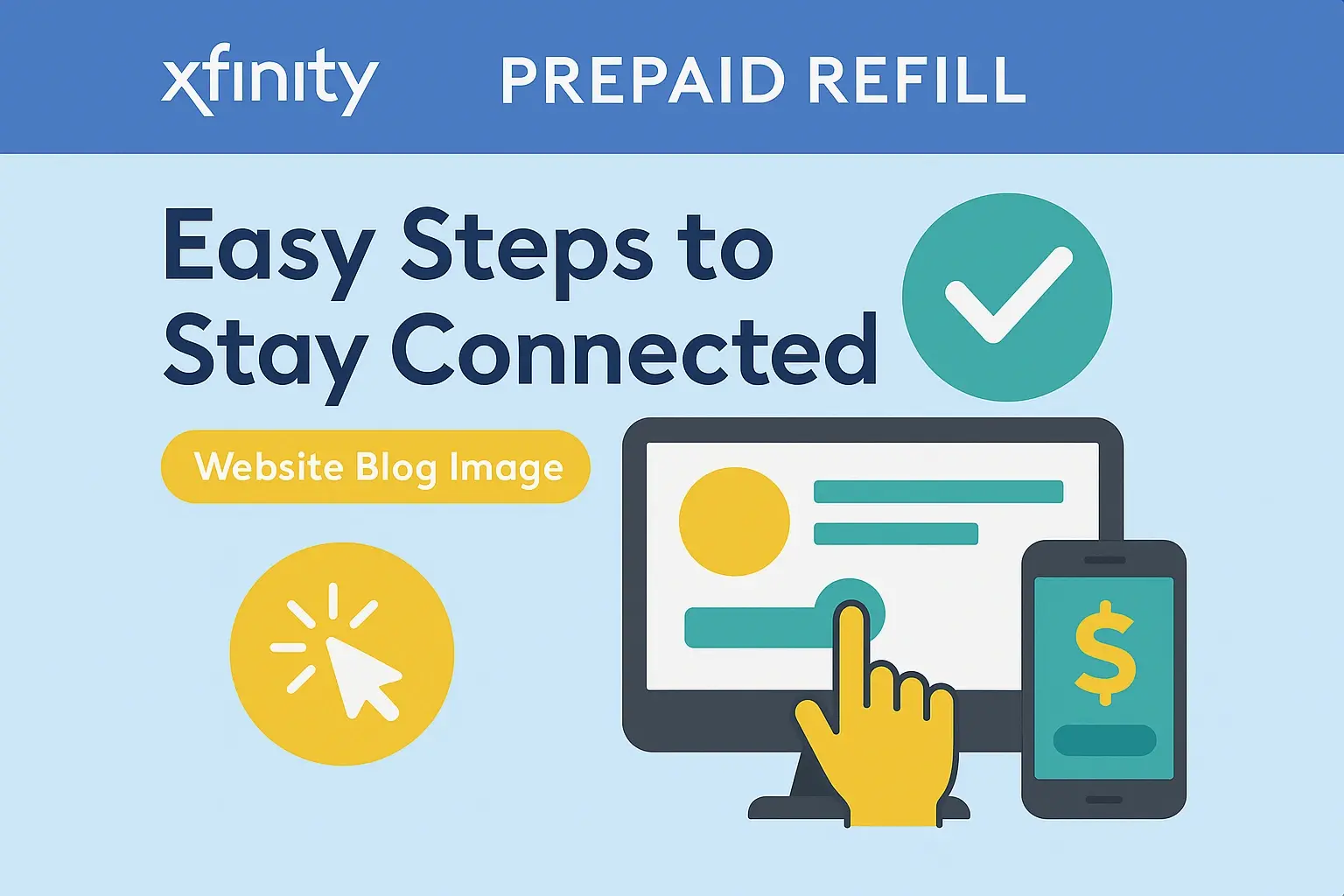Unlock the Potential of Your Devices: Xfinity Port Forwarding Guide

Unlock the full potential of your home network and devices with our comprehensive Xfinity port forwarding guide. Learn how to enhance gaming, streamline remote access, and improve the performance of various applications by mastering this essential networking technique. This guide provides clear, step-by-step instructions for Xfinity users.
What is Port Forwarding?
Port forwarding is a network configuration technique that directs incoming internet traffic from a specific port on your router to a specific device on your local network. Think of your router as a receptionist at a large office building. When a visitor (incoming internet traffic) arrives, the receptionist needs to know which office (device) the visitor is trying to reach. Port forwarding tells your router exactly which internal device should receive traffic arriving on a particular "doorway" or port number. This is crucial for applications that need to accept incoming connections from the internet, such as online games, remote access tools, or servers.
Why Port Forwarding Matters for Xfinity Users
Xfinity, like many Internet Service Providers (ISPs), provides you with a router that acts as the gateway to your home network. By default, your router might block certain types of incoming traffic for security reasons. However, this can hinder the performance and functionality of various applications and devices. For Xfinity users, port forwarding is essential for several reasons:
- Improved Online Gaming Experience: Many online games require specific ports to be open to allow for direct connections between players, reducing lag and improving matchmaking.
- Seamless Remote Access: If you need to access your home computer or network remotely (e.g., for work or to retrieve files), port forwarding allows you to establish a connection.
- Hosting Servers: Whether you're hosting a personal game server, a web server, or a media server, port forwarding is necessary for external users to connect to it.
- Enhanced Device Functionality: Certain smart home devices, security cameras, and VoIP services rely on specific ports being open to function correctly when accessed from outside your local network.
- Overcoming NAT Limitations: Network Address Translation (NAT), a common feature of routers, can sometimes create issues for peer-to-peer connections. Port forwarding helps to bypass these limitations.
As of 2025, the demand for seamless connectivity for gaming, remote work, and IoT devices continues to grow. Understanding and implementing port forwarding on your Xfinity network ensures you can fully leverage the capabilities of your digital life without artificial network restrictions.
Understanding IP Addresses and Ports
Before diving into port forwarding, it's vital to grasp the fundamental concepts of IP addresses and ports. These are the building blocks of network communication.
IP Addresses: The Network's Mailing Address
An IP (Internet Protocol) address is a unique numerical label assigned to each device connected to a network that uses the Internet Protocol for communication. It serves two main functions: host or network interface identification and location addressing. There are two main versions:
- IPv4: The most common version, represented as four sets of numbers separated by periods (e.g., 192.168.1.100). Each number ranges from 0 to 255.
- IPv6: A newer, more extensive version designed to address the depletion of IPv4 addresses. It's represented by a longer string of hexadecimal characters separated by colons (e.g., 2001:0db8:85a3:0000:0000:8a2e:0370:7334).
Within your home network, devices are assigned private IP addresses (usually in the 192.168.x.x, 10.x.x.x, or 172.16.x.x ranges). Your Xfinity router has a public IP address that is visible to the internet, which is how external devices find your network. When you port forward, you're essentially telling your router to direct traffic arriving at its public IP address on a specific port to the private IP address of a particular device on your local network.
Ports: The Doors to Applications
A port is a communication endpoint in an operating system. It's a logical construct, not a physical one. Think of it as a specific "door" on a device that an application uses to send and receive data. There are 65,535 possible ports, numbered from 0 to 65535. These ports are categorized into three ranges:
- Well-Known Ports (0-1023): Reserved for common services. For example, HTTP (web browsing) uses port 80, and HTTPS (secure web browsing) uses port 443.
- Registered Ports (1024-49151): Used by specific applications or services registered with the Internet Assigned Numbers Authority (IANA).
- Dynamic or Private Ports (49152-65535): Can be used by applications for temporary or private communication.
When you set up port forwarding, you specify which port number (or range of port numbers) on your router should be directed to which device's IP address and on which port that device is listening.
Accessing Your Xfinity Router Settings
The first step to configuring port forwarding on your Xfinity network is to access your router's administrative interface. Most Xfinity routers, especially the Xfinity Gateway devices, are managed through a web-based portal.
Method 1: Using the Default Gateway IP Address
This is the most common method. Your router's default gateway IP address is the address you use to access its settings.
- Connect to your Xfinity Wi-Fi network: Ensure the device you are using (computer, tablet, smartphone) is connected to your home Wi-Fi network.
- Open a web browser: Launch your preferred web browser (Chrome, Firefox, Edge, Safari, etc.).
- Enter the gateway IP address: In the address bar, type the default gateway IP address for Xfinity routers. This is typically 10.0.0.1. Some older or different models might use 192.168.1.1 or other addresses, but 10.0.0.1 is the most common for Xfinity Gateways.
- Press Enter: The router's login page should appear.
Method 2: Finding the Gateway IP Address on Your Device
If you're unsure of the IP address or it doesn't work, you can find it on your computer:
- On Windows:
- Open the Command Prompt (search for "cmd").
- Type
ipconfigand press Enter. - Look for the "Default Gateway" entry under your active network adapter (usually Wi-Fi or Ethernet).
- On macOS:
- Go to System Preferences > Network.
- Select your active network connection (Wi-Fi or Ethernet).
- Click "Advanced..." and then go to the "TCP/IP" tab.
- The router's IP address will be listed as "Router".
- On Smartphones (iOS/Android):
- Go to your Wi-Fi settings.
- Tap on your connected network's name or the "i" icon next to it.
- Look for the "Router" or "Gateway" IP address.
Login Credentials
Once you've entered the IP address, you'll be prompted for a username and password. For Xfinity Gateways, the default credentials are often printed on a sticker on the router itself. Common defaults include:
- Username: admin
- Password: password (or a unique password printed on the device)
If you've changed these credentials and forgotten them, you may need to perform a factory reset on your router, which will revert all settings to their defaults. This is generally not recommended unless absolutely necessary.
Step-by-Step Guide to Xfinity Port Forwarding
Now that you can access your router's settings, let's walk through the process of setting up port forwarding. This guide assumes you are using a common Xfinity Gateway device and its web interface. The exact layout might vary slightly based on firmware updates.
Finding Your Device's IP Address
Before you can forward ports, you need to know the IP address of the device you want to direct traffic to. It's highly recommended to assign a static IP address to this device. If the device's IP address changes (which can happen with DHCP), your port forwarding rules will break. You can either configure a static IP directly on the device or, more commonly, set up a DHCP reservation within your router's settings.
Setting up a DHCP Reservation (Recommended)
- Log in to your Xfinity router's interface (e.g., 10.0.0.1).
- Navigate to the "Connected Devices" or "DHCP" section.
- Find the device you want to assign a static IP to. You'll typically see a list of connected devices with their MAC addresses.
- Select the device and look for an option like "DHCP Reservation," "Static IP," or "Address Reservation."
- Assign an IP address from your router's local network range (e.g., 192.168.1.150) that is outside the typical DHCP assignment range but within the same subnet. Your router will usually guide you on this.
- Save the changes. The device will now always receive this IP address from the router.
Finding the Device's Current IP Address (if not using DHCP Reservation)
If you haven't set up a DHCP reservation, you'll need to find the device's current IP address:
- On PCs (Windows): Open Command Prompt, type
ipconfig, and find the IPv4 address. - On Macs: Go to System Preferences > Network, select your connection, and look for the IP address.
- On Consoles/Smart Devices: Check the network settings menu of the specific device.
Remember this IP address. If it changes, your port forwarding will stop working.
Identifying the Correct Ports
This is a critical step. You need to know precisely which ports your application or device requires. These are usually specified by the software developer or in the device's manual.
- Gaming: Search online for "[Game Name] port forwarding" or "[Game Name] network requirements." For example, PlayStation Network often uses UDP ports 3478-3479 and TCP port 3074. Xbox Live uses UDP ports 88, 500, 3072, 3544, and UDP 3074.
- Remote Desktop: The default port for Microsoft Remote Desktop Protocol (RDP) is TCP port 3389.
- Servers (Web, FTP, Game): Web servers typically use TCP port 80 (HTTP) and 443 (HTTPS). FTP uses TCP ports 20 and 21.
- Security Cameras: This varies greatly by manufacturer. Check your camera's documentation.
You will need to know if the port requires TCP (Transmission Control Protocol), UDP (User Datagram Protocol), or both. Some applications require a range of ports. For example, a range might be specified as "10000-10010."
Navigating the Xfinity Router Interface
Once logged in to 10.0.0.1:
- Look for a section related to "Advanced Settings," "Firewall," "Port Forwarding," or "Virtual Servers." On many Xfinity Gateways, this is found under Advanced Settings > Port Forwarding.
- You might see a list of existing rules.
Creating a New Port Forwarding Rule
This is where you'll input the information you gathered.
- Click on "Add New" or a similar button to create a new port forwarding rule.
- You will typically be presented with fields such as:
- Application Name/Description: A descriptive name for the rule (e.g., "MyGameServer," "RemotePC").
- Protocol: Select TCP, UDP, or Both.
- External Port / Public Port / WAN Port: This is the port number that external devices will connect to on your router's public IP address. Enter the required port number or the start of a port range.
- Internal Port / Private Port / LAN Port: This is the port number on your local device that the traffic will be forwarded to. Often, this is the same as the external port, but it can be different if your application listens on a different internal port.
- Internal IP Address / Device IP Address: Enter the static IP address of the device you want to forward the port to (the one you set up via DHCP reservation or found earlier).
- For Port Ranges: If your application requires a range of ports (e.g., 10000-10010), you will typically have separate fields for "Start Port" and "End Port" for both the External and Internal ports. Ensure they match.
- Example: Let's say you want to forward TCP port 3389 for Remote Desktop to your PC at 192.168.1.150.
- Application Name: RemoteDesktop
- Protocol: TCP
- External Port: 3389
- Internal Port: 3389
- Internal IP Address: 192.168.1.150
- Click "Save," "Apply," or "Add Rule" to create the rule.
Saving and Testing Your Configuration
After saving the rule, your router may prompt you to reboot or apply the changes. It's a good practice to do so.
Testing:
- From an external network: The most reliable way to test is to use a device that is NOT connected to your home Wi-Fi network (e.g., a friend's house, your smartphone using cellular data).
- Use an online port checker tool: Search for "online port checker" and use a reputable tool. Enter your public IP address (you can find this by searching "what is my IP" on Google from a device on your network) and the port number you just forwarded. The tool will tell you if the port is open.
- Test the application: If you forwarded a port for a specific application (like a game server or remote desktop), try connecting to it from the external device.
If the test fails, double-check all the details: IP address, port numbers, protocol, and ensure the device is actually running the application and listening on that port.
Common Use Cases for Port Forwarding with Xfinity
Port forwarding is not just a technicality; it enables a wide range of functionalities that enhance your digital experience. Here are some of the most common applications:
Online Gaming Optimization
For gamers, low latency and stable connections are paramount. Many online multiplayer games rely on direct peer-to-peer connections or specific server communication protocols that can be hampered by default router settings. Opening the correct ports can:
- Reduce Lag: By allowing direct communication, you can bypass some of the router's NAT processing, leading to lower ping times.
- Improve Matchmaking: Some games use port forwarding to find players more efficiently.
- Enable Hosting: If you want to host your own game server for friends, port forwarding is essential.
Example: For games like Call of Duty, ports like TCP/UDP 3074 are often required. For Minecraft Java Edition, TCP port 25565 is standard for hosting a server.
2025 Stat: According to Newzoo, the global games market is projected to reach $225 billion in 2025, highlighting the continued importance of optimized online gaming experiences.
Remote Desktop and Access
Working from home or needing to access files on your home PC while you're away requires a reliable connection. Port forwarding allows you to securely connect to your computer remotely.
- Remote Desktop (RDP): Primarily used for Windows PCs, RDP typically uses TCP port 3389. Forwarding this port allows you to control your Windows computer from anywhere.
- SSH (Secure Shell): Commonly used for Linux/macOS systems, SSH uses TCP port 22.
- VPN Servers: If you run your own VPN server at home, you'll need to forward the specific ports your VPN software uses (e.g., OpenVPN often uses UDP port 1194).
Security Note: Exposing RDP or SSH directly to the internet can be a security risk if not properly secured with strong passwords and potentially other measures like VPNs. Consider changing default ports to obscure them slightly, though this is not a primary security measure.
Hosting Servers and Applications
For enthusiasts and small businesses, hosting services from home is a viable option.
- Web Servers: To host a website accessible from the internet, you'll need to forward HTTP (TCP port 80) and HTTPS (TCP port 443) to the machine running your web server software (like Apache or Nginx).
- Game Servers: As mentioned, hosting dedicated servers for games like Minecraft, Valheim, or ARK: Survival Evolved requires specific port forwarding rules.
- Media Servers (Plex, Jellyfin): If you want to access your media library from outside your home network, you'll need to forward the specific port your media server uses (e.g., Plex uses TCP port 32400).
2025 Trend: The rise of the creator economy and the demand for personalized online experiences continues to drive interest in self-hosting applications and services.
Security Cameras and IoT Devices
Many modern security camera systems and Internet of Things (IoT) devices offer remote access features. Port forwarding is often necessary to view live feeds or control these devices when you're away from home.
- IP Cameras: Each camera model will have its own specific ports, often including RTSP (Real-Time Streaming Protocol) ports for video streams. Check your camera's manual.
- Smart Home Hubs: Some advanced smart home hubs might require port forwarding for specific functionalities or integrations.
Important: Ensure that any IoT devices or cameras you expose to the internet have strong, unique passwords and are kept updated with the latest firmware to mitigate security vulnerabilities.
Troubleshooting Common Port Forwarding Issues
Despite following the steps, you might encounter issues. Here are common problems and how to resolve them:
1. Port Checker Shows "Closed" or "Filtered"
- Double-check IP Address: Ensure the internal IP address in your port forwarding rule is correct and static.
- Verify Port Numbers: Confirm you've entered the correct external and internal port numbers, and that they match the application's requirements.
- Check Protocol: Make sure you selected the correct protocol (TCP, UDP, or Both).
- Firewall Interference: The firewall on the target device might be blocking the connection. Temporarily disable it for testing (remember to re-enable it).
- ISP Blocking: Some ISPs block common ports (like 80 or 25) to prevent users from running servers. You might need to use a non-standard port.
- Double NAT: If you have another router upstream from your Xfinity Gateway (e.g., a personal router connected to the Xfinity modem/router combo), you might be experiencing Double NAT. You'll need to port forward on both devices or put one in bridge mode.
- Application Not Running: The application or service you're trying to reach must be actively running and listening on the specified port on the target device.
2. Game Connectivity Issues
- Multiple Port Forwarding Rules: Some games require multiple ports or port ranges. Ensure all are configured correctly.
- UPnP (Universal Plug and Play): While generally less secure, some games rely on UPnP to automatically open ports. Check if UPnP is enabled on your router (though manual port forwarding is preferred for reliability).
- Router Firmware: Ensure your Xfinity Gateway has the latest firmware.
3. Remote Access Not Working
- Public IP Address Change: Your public IP address can change if it's dynamic. Use a Dynamic DNS (DDNS) service to keep track of your IP.
- Firewall on Remote Device: Ensure the firewall on the device you're trying to access allows incoming connections on the forwarded port.
- Authentication Issues: The problem might not be with port forwarding but with the username/password or authentication method for your remote access service.
4. Xfinity Router Interface Unresponsive
- Clear Browser Cache: Sometimes browser cache can cause issues.
- Try a Different Browser/Device: Rule out browser-specific problems.
- Router Reboot: A simple reboot of your Xfinity Gateway can often resolve temporary glitches.
- Factory Reset: As a last resort, a factory reset will restore the router to its default settings, but you will lose all custom configurations.
Tip: Keep a detailed log of the port forwarding rules you create, including the device, IP address, ports, and protocol. This will be invaluable for troubleshooting.
Security Considerations and Best Practices
While port forwarding is powerful, it also opens potential security vulnerabilities if not managed carefully. Exposing services to the internet requires vigilance.
1. Use Strong, Unique Passwords
This is non-negotiable. For any device or service you make accessible via port forwarding (e.g., remote desktop, NAS, camera systems), use complex, unique passwords. Avoid default credentials and common password patterns.
2. Only Forward Necessary Ports
Do not forward ports "just in case." Only open ports that are absolutely required for the specific application or device. The fewer open ports, the smaller your attack surface.
3. Keep Software and Firmware Updated
Always ensure your router's firmware is up-to-date, and that the operating systems and applications on the devices you are forwarding ports to are also patched and updated. Vulnerabilities are frequently discovered and fixed.
4. Consider Changing Default Ports
While not a foolproof security measure, changing the default port for a service (e.g., instead of RDP on 3389, use 3390) can deter automated scans that target common default ports. However, this should be combined with other security practices.
5. Use a Firewall on Your Devices
Ensure the firewall on the target device is enabled and configured to allow only necessary inbound connections. You can often configure your router's firewall to be more restrictive as well.
6. Implement Dynamic DNS (DDNS) Carefully
If your public IP address changes frequently, a DDNS service is useful. However, ensure you use a reputable DDNS provider and secure your DDNS account with a strong password.
7. Consider VPNs for Remote Access
For highly sensitive access, running a VPN server on your network and connecting to it via VPN before accessing other services is more secure than direct port forwarding. You would only need to forward the VPN server's port.
8. Regularly Review Your Port Forwarding Rules
Periodically check your router's port forwarding list to ensure all rules are still necessary and correctly configured. Remove any rules that are no longer in use.
2025 Cybersecurity Landscape: With the increasing sophistication of cyber threats, adopting a "zero trust" mindset and layering security measures is more critical than ever. Port forwarding should be seen as one component of a broader security strategy.
Alternatives to Port Forwarding
While port forwarding is a powerful tool, it's not always the best or only solution. Depending on your needs, these alternatives might be more suitable or secure:
1. UPnP (Universal Plug and Play)
How it works: UPnP allows devices on your network to automatically request port forwarding from the router. Some applications and games use this to configure themselves.
Pros: Convenient, requires no manual configuration.
Cons: Less secure, can be exploited by malicious software, not all devices support it, and sometimes it doesn't work reliably.
Recommendation: Use with caution. If you can manually configure port forwarding, it's generally preferred for security and reliability.
2. VPN Services
How it works: Instead of exposing your devices directly, you connect to a VPN server. If you're hosting a service, you can use a VPN with port forwarding features (offered by some VPN providers) or set up your own VPN server on your network.
Pros: Enhances privacy and security, can bypass ISP restrictions.
Cons: Can add latency, may require a subscription for commercial VPNs, setting up your own VPN can be complex.
Recommendation: Excellent for general internet privacy and for accessing services securely when traveling.
3. Cloudflare Tunnel (formerly Argo Tunnel)
How it works: This creates a secure, outbound-only connection from your server to Cloudflare's network. You don't need to open any inbound ports on your router.
Pros: Highly secure, no inbound ports needed, can integrate with Cloudflare's security features (WAF, DDoS protection).
Cons: Requires a Cloudflare account (free tier available), best suited for web services.
Recommendation: A modern, secure alternative for hosting web applications and APIs.
4. Reverse Proxies
How it works: A reverse proxy sits in front of your web server(s) and handles incoming requests. While often used within a data center, it can be configured for home use, though it typically still involves some form of port forwarding or VPN to access the proxy itself.
Pros: Can improve performance, security, and manage multiple services.
Cons: Adds complexity to your setup.
Recommendation: More advanced users might consider this for managing multiple hosted services.
5. Services with Built-in Remote Access
How it works: Many modern applications and devices (like Plex Media Server, some NAS devices, and security camera systems) have their own cloud-based relay or remote access features that don't require manual port forwarding.
Pros: Easy to set up, no networking knowledge required.
Cons: Relies on the service provider's infrastructure, may have limitations, potentially less performant than direct connections.
Recommendation: Check if your application or device offers a native remote access solution first.
Conclusion: Unlocking Your Network Potential
Mastering Xfinity port forwarding is a key skill for anyone looking to optimize their home network for gaming, remote work, hosting, or advanced device functionality. By understanding IP addresses, ports, and the straightforward process of configuring your Xfinity router, you can overcome common network limitations and unlock a world of possibilities. Remember to always prioritize security by using strong passwords, keeping software updated, and only forwarding the ports you absolutely need. Troubleshooting is part of the process, so refer back to this guide if you encounter issues. With this knowledge, you're well-equipped to take full control of your network and ensure your devices perform at their peak.





